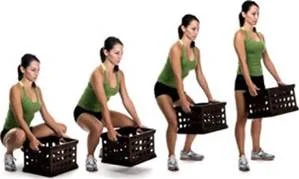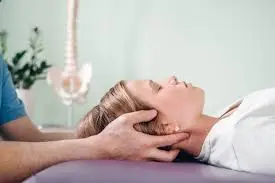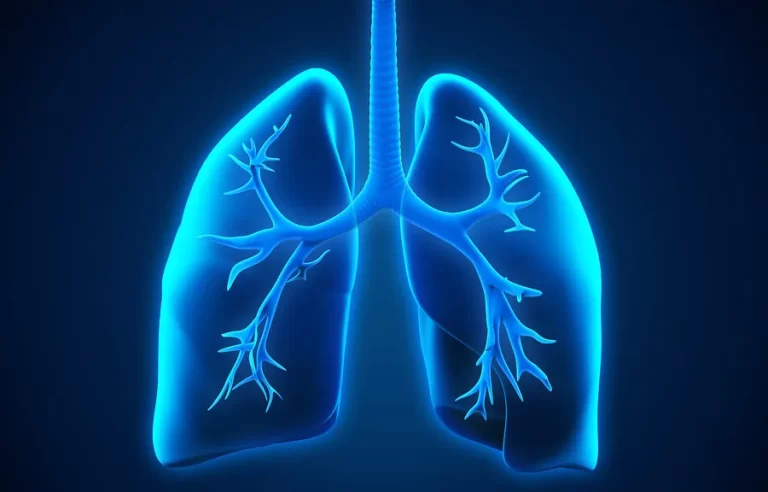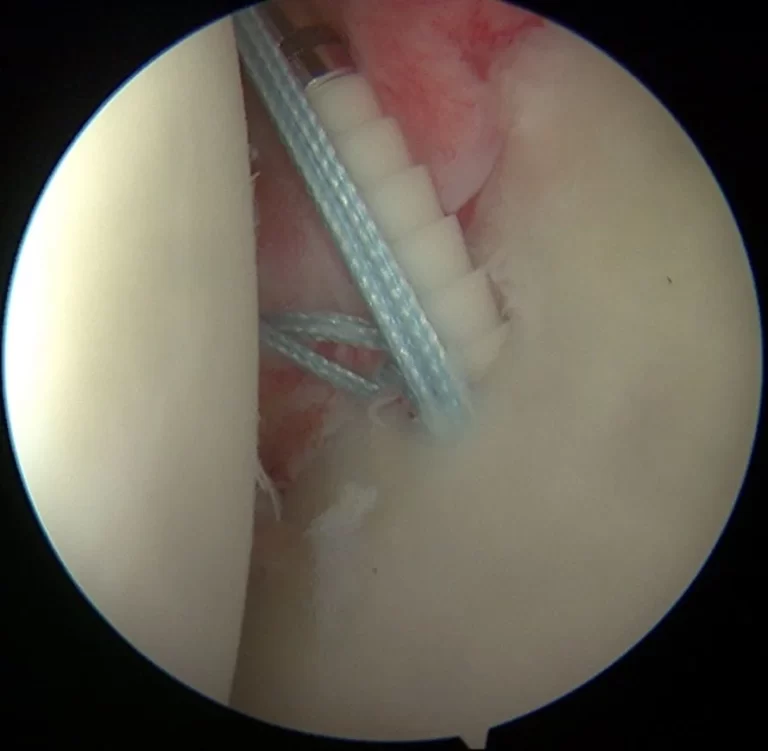Body Mechanics
Table of Contents
What are Body Mechanics?
Body mechanics refers to the way in which we use our bodies to perform physical tasks, such as lifting, pushing, and pulling. Good body mechanics involves using the correct posture, alignment, and movement patterns to reduce the risk of injury and strain on the muscles, joints, and other body structures.
Practicing proper body mechanics is important in preventing workplace injuries, improving athletic performance, and maintaining overall health and wellness. When we use good body mechanics, we are able to use our muscles and joints more efficiently and effectively, reducing the risk of overuse injuries and minimizing the strain on our bodies.
In addition to reducing the risk of injury, good body mechanics can also improve our energy levels, increase our overall physical performance, and improve our quality of life. By learning and practicing proper body mechanics principles, we can protect our bodies from harm and improve our physical capabilities in all aspects of our lives.
Body mechanics is a term used to relate the ways we move as we go about our daily lives. It involves how we have our bodies when we sit, stand, lift, carry, bends, and sleep. Poor body mechanics are frequently the cause of back problems. When we don’t shift correctly and safely, the spine is put through abnormal tension that over time can route to degeneration of spinal structures like discs and joints, injury, and irrelevant wear and tear. That is why it is so important to know the principles of proper body mechanics.
Good body mechanics means using the body’s strength to the best mechanical advantage to do a function efficiently and without injury.
A function does not have to be “heavy” or appear difficult to position us at risk for injury. many injuries occur because of the wear and tear of poor body mechanics on our bodies over time.
Proper body mechanics are approximately important for protecting your spine healthy, it’s easy to envelop these principles in daily life.
Posture
Good body mechanics are created on good posture.
Good posture means the spine is in a “neutral” position – not too curved forward and not arched back too far.
“Neutral” Postures
- keep away from “awkward” postures that cause injuries,
- Try to have the body close to a neutral position while working and in daily tasks. ie an untwisted spine with the center of gravity within the person’s base of support.
- We transfer in and away from the “neutral” posture all the time! (ie: walking, reaching, etc.) The concept is to be as near to neutral as.
- possible and do not use massive forces (ie: pushing, pulling, lifting) surface of our base of support.
Sitting
Although sitting at a table or at home viewing television, good body mechanics are static and significant to handle in the brain. For deskwork, regarding investing in a comfortable perfect chair.
Good sitting
- Place your buttocks at the back of the seat while maintaining a small scope between the back of your knees and the seat of the chair.
- Place your feet even on the floor with your knees bent at a 90° angle.
- drag your shoulders back and elevate your chest.
- Lift your chin through it is level and relax your jaw and mouth.
- If your chair has armrests, check they are positioned to support the weight of your arms. Not too high to make you arch or too low to make you reach. Footrests container also be a thoughtful way to maintain good posture while sitting. check the footrest is positioned so that your knees are bent freely and are situated by your hips.
- check you have sufficient support for your lower back. Look for a chair that has accommodating lumbar support. If that is not available, extend back support by using a lumbar rotation or level a rolled-up towel or pillow placed behind the lower back.
Sleeping
We spend nearly 1/3 of our time in bed, so we can not forget how our bodies take position during sleep. During our waking hours, the purpose is to maintain a neutral spine even while we are in bed. Here’s how:
- Make certain you are sleeping on a firm mattress.
- Avoid sleeping on your stomach or with your head upraised on an oversized pillow. These positions cause the back to arch and place tension on the spine.
- The side and back are the best positions for maintaining a neutral position and a should for anyone with back or neck problems.
- Place a pillow connecting your knees (for side sleeping) or behind your knees (for back sleeping). This will help keep your spine in the right position and help occasion stress on the lower back.
- Use a pillow that allows you to remain your head aligned with the rest of your body. various and/or oversized pillows may look great on a made bed but do not necessarily support your back while sleeping.
Lifting
The process of lifting places may be a significant load on the low back and thus has the highest risk of injury. The use of suitable lifting mechanics and posture is critical to prevent injury. In the stop, it is also more important you lift more how to lift heavy a weight. Here are a few pieces of advice on how to lift safely:
- Place the burden immediately in front of you.
- Turn the knees to a full squat or lunge position.
- Bring the load towards your chest.
- Assume a neutral position with your back.
- Lengthen the lumbar and buttocks muscles to connect the back.
- Lift at this time from the legs to the standing position.
- DO NOT:
- Lift from a twisted/sideways position.
- Lift from a forward stooped/imbalanced position.
As you can see, proper body mechanics are actually important for keeping your spine healthy. And it’s easy to incorporate these principles within your daily life. It may appear unnatural at first, but if you have at it, it will easily become routine. Your back does thank you for it!
Working with Wheelchair/seated clients Clients
In General:
- Plan first and place equipment properly.
- Clear areas of obstacles.
- Transfer or lift a client over the shortest available distances.
- Communicate with clients and other staff.
- Allow the client to help as much as they are suitable to.
- Use general body mechanics concept.
- Always ask for assistance if you are not confident.
- NEVER lift or shift a client alone manually (must be lifted by at least two staff or by mechanical lift if alone)
Elements of Body Mechanics
Body movement involves coordinated muscle activity and neurological integration. It involves the simple elements of body posture, balance, and coordinated movement. Body structure and posture bring body parts within a position to promote maximum balance and body function. When the body is properly checked, even if standing, sitting, or lying, the strain on the joints, muscles, tendons, and ligaments is diminished.
The body pattern is related by placing one body part in line with another body part in a vertical or horizontal line. Correct distribution contributes to body balance and reduces strain on muscle-skeletal structures. Without this balance, the danger of falls and trauma enhance. In the speech of body mechanics, the center of gravity is the center of the weight of such an object or person. A lower center of gravity extends stability. This is perhaps performed by bending the knees and taking the center of gravity near the base of support, keeping the back straight. An extensive base of support is the substructure for stability. A wide base of support is made by placing feet a comfortable, shoulder-width distance apart. When a vertical line falls from the center of gravity between the wide base of support, body balance is achieved. If the vertical line shift outside the base of the support, the body makes a miss balance.
The diagram demonstrates a respectably checked person whose balance is maintained and whose line of gravity drops within the base of support. demonstrates how balance is not saved during the line of gravity falling outside the base of support and exposes how balance is retaking during the line of gravity falling within the base of support.
Injury Prevention Tips \Lifting Mechanics.
- Design work/tasks that facilitate variety.
- During all burdening occupations, avoid a fully flexed spine and rotate the trunk using the hips.
- During lifting, select a posture to minimize the reaction force on the low back (stoop, squat, etc), but keep the external burden close to the body.
- Consider the communicable aim: direct external forces through the low back at pulling on a door handle, vacuuming, etc.
- Use techniques that minimize the real weight of the load corporality handled.
- Allow time for the disc nucleus to balance ligaments to regain stiffness, and stress on the annulus to equalize after prolonged flexion, and do not immediately perform the muscular activity.
- Avoid lifting or spine bending shortly after getting up from bed
- Pre-stress and stabilize the back level during light tasks.
- Avoid twisting and the simultaneous making of high twisting force.
- Use momentum when lifting awkwardly placing a light burden.
- Avoid prolonged sitting.
- Consider the best rest break policy based on your job demands.
- Practice joint-conserving kinematic movement patterns.
- Maintain a reasonable level of fitness.
Physical Therapy
- Educate clients on proper body mechanics [Benefits of Having good posture]
- Muscle strains, mostly those of the back, are a frequent reason for people coming to our clinic.
- Many people struggle with their backs because they carry and move objects incorrectly.
- It is dynamic to have the correct technique when lifting which we can justify to you.
- Poor posture usually leads to complaints of back, neck, and shoulder pain, because it throws the muscles out of alignment.
- Poor posture can also change the gait cycle which can lead to lower back pain and knee pain. By correcting posture, we can help patients avoid all these injuries.
- Assess posture and then determine effective exercises or suggest approaches clients can improve posture at work/sport/ADL by estimating the ergonomics of their workstation.
- Mobilize stiff joints and stretch the tight muscles to improve your posture.
- Teach good lifting techniques and strengthen suitable muscles.
- Ensure core muscles are strong and applied correctly.
FAQs
Using proper body mechanics includes:
Lifting With the Knees.
Maintaining Good Posture While Sitting.
Standing With Feet Apart.
Aligning The Body When Moving or Turning.
Avoiding Sitting for Hours on End.
Your feet must be apart, with one foot slightly in front of the other.
Keep your back straight.
Twist from your hips and knees.
Don’t bend at your waist.
Raise the object and work your arm and leg muscles.
Hold the object near your body at your waist level.
8 rules of Body Mechanics.
1 Maintain a broad base of support.
2 Turn at the hips and knees to get near to the person or object.
3 Use the strongest muscles.
4 Use your body weight to assist with push, or pull.
5 Shift heavy objects near the body.
6 Avoid twisting the body.
7 Avoid bending for extended periods.
Proper use of body mechanics will spread energy, reduce stress and strain on body structures, reduce the possibility of personal injury, and create movements that are safe.
Body mechanics is a term specific to relate to the ways we move as we go about our daily lives. It includes how we hold our bodies during we sit, stand, lift, carries, bend, and sleep. Poor body mechanics are always the cause of back problems.
It is easy to exercise good body mechanics when you follow three easy suggestions: Stand with your feet apart to create a durable substructure. Bend at your knees by choice of your waist. Keep your neck, back, hips, and feet situate when you move; avoid twisting and bending at the waist.
Good posture is important. Avoid slouching and forward head thrust. Protect curves in the lower back and align ears over shoulders, and hips over ankles. Sit upright, head facing forward.
Important body mechanics essential involve keeping a coordinated posture, raising with the legs and hips, and no twisting at the waist by lifting. Using these principles when lifting will prevent back injuries.
Structure mentions how the head, shoulders, spine, hips, knees, and ankles join and line up with each other. Proper structure of the body places less stress on the spine and supports you to have good posture. To keep the proper pattern, avoid successive positions or movements: Have a slumped, head-forward posture.
Body mechanics is a fusion of posture, balance, and motion, all of which impact coordinated movement and stress located on the body. Maintaining a good posture while standing or sitting is a developed skill that needs practice and training.
Body mechanics training takes place when satisfactory body movement is related to correcting and preventing poor posture, decreasing stress on ligaments, tendons, and joints, and better physical capacity. Benefits of body mechanics training include the prevention of injury and weakness as well as improved muscular skills.
Now, body mechanics process how the different parts of your musculoskeletal system work together to donate and maintain balance and posture. Understanding the mechanics of your body tolerate you to use it more efficiently and safely in performing your tasks and, thus, helps you avoid injuries.







